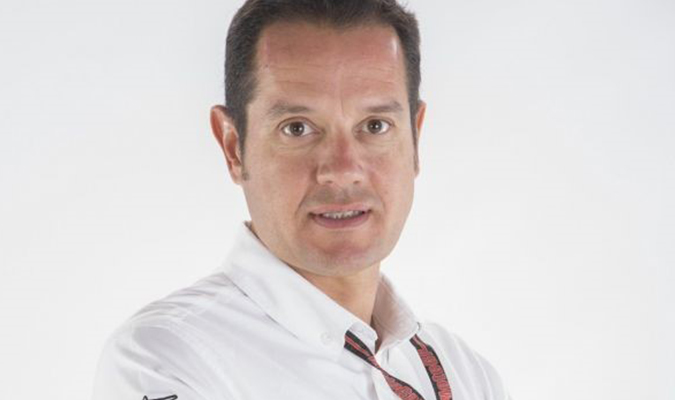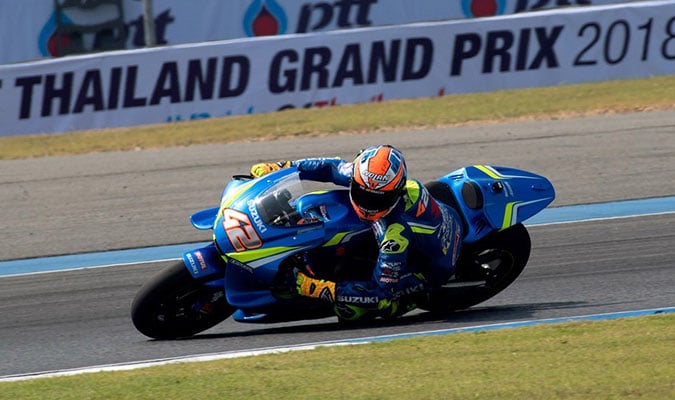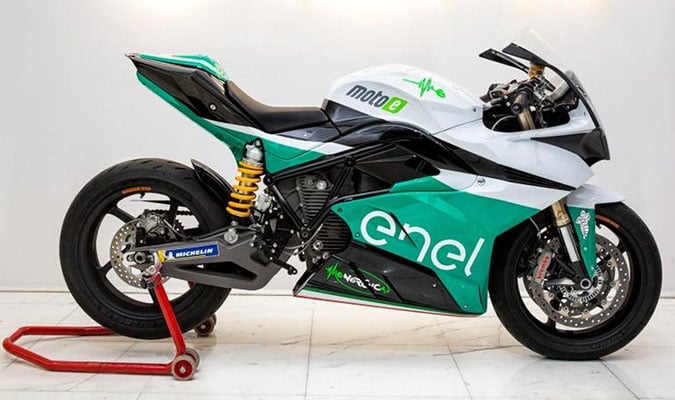Search the latest and greatest job opportunities in sport

Ahead of the new MotoGP season, SportsPro Media interview managing director Pau Serracanta. He explains how the global motorcycling series is driving innovation on all fronts in an attempt to engage every generation of fan, through ventures into esports, electric mobility and more . For the original article, click here .
With the new MotoGP season set to get underway later this month, there is plenty for fans of the global motorcycling series to look forward to. 2018 will see the championship stage a race in Thailand for the first time when it heads to the Buriram Circuit in October, while the annual revival of the rivalry between Spanish riders Valentino Rossi and Marc Márquez is enough to whet the appetite of many a motorsport enthusiast.
But beyond the track, MotoGP is stepping up its efforts to create a product that is appealing to every kind of fan. The championship’s managing director, Pau Serracanta, says that the series is in "constant evolution", and 2018 will see it continue to build on its budding esports venture, which was officially launched last year as the Moto GP eSport Championship.
MotoGP is also beginning to turn its attention to electric mobility, with the FIM MotoE World Cup poised for its inaugural season in 2019, when it will become motorcycling’s first all-electric racing series. And on top of that, MotoGP continues to revolutionise the way its sport is presented, with an increased focus on its digital output and a slate of virtual reality offerings to complement live coverage of its races.
With the first Grand Prix of the 2018 season in Qatar less than two weeks away, Black Book caught up with Serracanta to discuss how - as far as motorcycling is concerned - MotoGP aims to ensure that it remains the leader of the pack.
What was the thinking behind taking an event to Thailand in 2018?
We are quite popular in south-east Asia - we have a lot of fans there, a lot of TV viewers and a lot of followers on social media. Also, in that region especially, motorcycling is a means of transportation - the big manufacturers like Honda and Yamaha are selling millions of bikes there.
Additionally, our race times mean that the broadcasting time in the region is late in the afternoon when people are at home watching TV, so we have a primetime slot and are very popular as a result. We have been getting a lot of spectators at the Malaysia Grand Prix, and we expect that Thailand will be the same. We also have plans to explore opportunities to race in Indonesia in the future, which would also be a success and a sold-out event.
Do you have any new on-site activations planned for your events this season to drive fan engagement?
Something that we started last year was the MotoGP eSport Championship, when we crowned the MotoGP esports world champion, who is an 18-year-old guy from Italy. This year, our plan is to increase our esports activity with a new game. We plan to do three offline events with the final of the championship taking place in Valencia like it did last year, but our plan is also to do online races. So this is something that is good for MotoGP, and I should say that we are doubling what we did in 2017.
Also, we have also launched the new MotoE Championship with electric bikes. This year, everyone who comes to a Grand Prix will be able to see a display of a MotoE bike, and on Sundays, before the MotoGP race, we are planning to do a demo lap with a MotoE bike, ridden by either a former MotoGP world champion or a rider from that particular country. So that is something quite new and exciting for us this year.

MotoGP has been staging testing in Thailand as the country prepares to host its first ever race in October
Has your venture into esports allowed you to attract a new kind of fan, or are you finding that your existing fanbase is taking an interest as well?
Our fanbase is 80 per cent male and is quite young - when we check the demographics of our fans compared to smaller motorsports we have more millennials. But when we look to the demographics of our esports fanbase, it’s what I call the ‘ultra-millennials’.
Last year, 50 per cent of the fans were aged from 14 to 23 years old, so it is a way to attract new audiences who will then stay will the real sport as well as the esport.
Is the arrival of the MotoE World Cup a sign that MotoGP is already looking to the future?
Yes. We are aware that electric mobility will be another option. Not the only one, but another option, and in terms of racing, we think that we have to explore this other option. So now our championship will be a hybrid championship, where we have combustion engines for MotoGP, Moto2 and Moto3, and we have fully electric engines for MotoE. So for us it is good to be able to offer all the options.
The MotoE World Cup will be a single manufacturer because the bike industry hasn’t yet put its heart into electric mobility enough for us to have a world championship. But for us, it is good to start with the series to get experience of how to charge the batteries, how to transport the batteries and how to handle the bikes in case of crashes. We want to get this advantage so that when the motorcycle industry is more focused on electric mobility, we will be ready.

Enel will be the title sponsor of the MotoE World Cup, which is set to debut in 2019
How do you differ from four-wheel racing when it comes to attracting sponsors? How do you pitch yourself to brands?
What we’re always trying to focus on first is promoting our values: innovation, technology and youthfulness. We also highlight the demographics of our audience, which is quite young, so we are putting forward consumers for the future. Additionally, we try to be very adaptive to the needs of all the possible sponsors.
We put everything on the table by identifying all the B2B opportunities, all the B2C opportunities and all the corporate hospitality services. Also from Dorna’s side, we’re there to encourage and find ways for future sponsors to be involved with teams or riders. What we want is for them to sponsor our sport and not any other, so we try to put as many possibilities and things on the table so that they can get the maximum return on the investment they are making with us.
How have you tried to reach out to your fanbase through social media and digital content?
If you look on social media, there is no cheating! We have been active for many years, and if you look at the social media numbers for motorsport, we are far ahead - we have more than 12 million followers on Facebook.
In terms of the content we put on social media, last year with esports we started from a white sheet of paper, and said we would create some content and distribute it, and we anticipated maybe five, ten or 15 million downloads, but we ended up with 25 million. Then when we checked the global numbers for MotoGP across all platforms we had one billion downloads, which is an incredible number.
So all of this content serves as a call to action to watch the race live on Sundays through our broadcasters, so it is part of our strategy. The motorcycle family is very loyal, passionate and open to new technologies and devices, so this is what we try to offer to them. On TV production, for example, we film from more than 100 cameras and we provide on-screen graphics to enrich the experience of watching our sport.
Is OTT broadcasting something you’re looking to expand into as well?
Yes, absolutely. Last year, for example, we were providing live virtual reality coverage. People who were subscribed to MotoGP.com could watch the race live in VR, so I would say we are always in constant evolution.
Give your career a boost with the latest live vacancies in the sports industry , or create an account today and stay up to date with all the latest industry knowledge, events and jobs in sport.
Find more great articles to learn about the sports industry on our Learn: Knowledge Hub
Search the latest and greatest job opportunities in sport
In the world of professional sports, sponsorship represents a significant source of revenue and plays a vital role for t...
Read moreThe sports industry is a vibrant and multifaceted industry, made up of a diverse range of sectors that shape its global ...
Read morePablo Romero, director of protocol at Sevilla FC and lecturer in the UCAM Master's Degree in Sports Management, shares t...
Read more